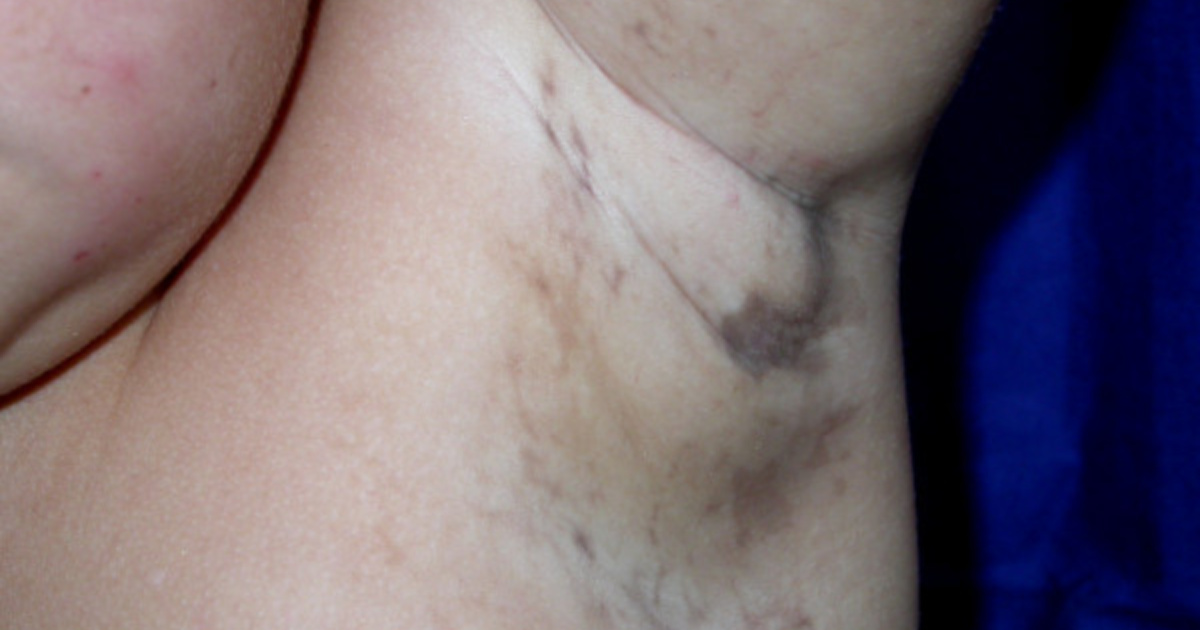
I know we have more in common with animals than we probably realize, but zebra stripes?
Who would have figured?
Our skin is actually striped with something called Blaschko’s lines. Experts believe they’re left by the movements of cells while we’re developing in utero.
We know because sometimes, the pattern becomes visible.
They’re named after Alfred Blaschko, the German dermatologist who first collected data on the skin conditions that allow them to be seen.
He presented his findings at a conference in 1901, and claimed the Blaschko lines didn’t match any other known skin patterns.
Now, scientists believe the most likely explanations is that they’re paths formed while we’re developing as embryos. To study them, Blaschko traded the lines onto a Greek statue.
The lines never cross the anterior midline and they form a characteristic V-shape at the back. Along the limbs, head, and face, the line are wavy.
There are several skin conditions that can cause lesions and pigmentation that follow Blaschko lines along the body. A few of those are lichen striatus, incontinentia pigmenti, and McCune-Albright syndrome.
Lesions that map to the Blaschko’s lines are an example of something called cutaneous mosaicism. It’s a mutation that causes the body to contain two different populations of skin cells, each with its own genetic material.
Where they meet, lesions for along the Blaschko’s lines.
One of the oddest forms of mosaicism is chimerism. Chimeras contain two sets of genetic material derived from two different fertilized eggs – it most commonly occurs when one twin absorbs the other in the womb.
A key sign is differences in pigmentation, like different colored eyes, but they may also have patterns on their skin.
Some rumors suggest the Blaschko’s lines can be seen under UV light, or that certain animals, like cats, are able to see them.
There is no evidence this is true, though.
So you’re just going to have to imagine what you look like as a zebra the next time you look in the mirror.
If you thought that was interesting, you might like to read a story that reveals Earth’s priciest precious metal isn’t gold or platinum and costs over $10,000 an ounce!